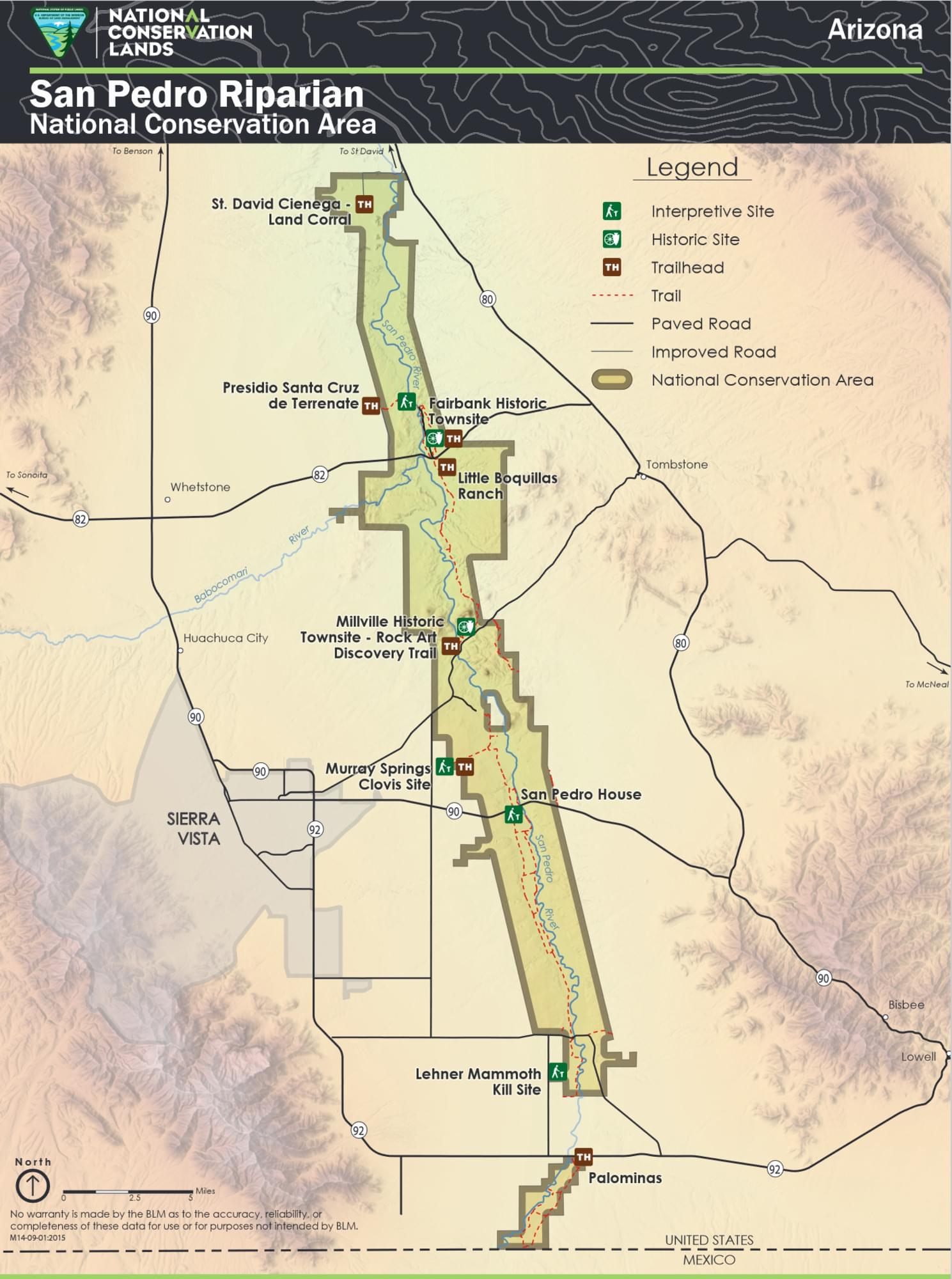San Pedro RNCA--Fairbank
San Pedro RNCA--Fairbank
Sierra Vista, Arizona 85650
Official WebsiteSan Pedro Riparian National Conservation Area Official Website
Friends of the San Pedro website
San Pedro Riparian National Conservation Area map
About this Location
Fairbank is a “ghost town” located within the San Pedro Riparian National Conservation Area (NCA), along the San Pedro River. Its life as a town began with the construction of a railroad in 1881, and it soon became an important depot as well as the closest railroad stop to Tombstone, then one of the largest western cities (15,000 in 1882). Originally called Junction City, Kendall, then Fairbanks, it was officially named Fairbank on May 16, 1883. The name refers to N.K. Fairbank of Chicago, who helped finance the railroad. The town was built on an old Mexican land grant, the San Juan de las Boquillas y Nogales, which was bought by the Boquillas Land and Cattle Company in 1901. The company evicted all potential land owners but continued to lease the mercantile building and a few residences well into the 1970s. The Bureau of Land Management acquired the land that was once the Mexican Land Grant in 1986 as part of the San Pedro Riparian NCA. Today the area is open for the public to enjoy. Take a self-guided tour around what was once a thriving boom-town of the wild west! Be on the look-out for historic points of interest . . . But note: It is illegal to remove any historic (older than 50 years) artifacts from public lands. Please leave everything in its place. Thank you for your help in preserving our historic resources!
About San Pedro Riparian National Conservation Area
See all hotspots at San Pedro Riparian National Conservation Area
The San Pedro Riparian National Conservation Area contains nearly 57,000 acres of public land in Cochise County, Arizona, between the international border and St. David, Arizona. The riparian area, where some 40 miles of the upper San Pedro River meanders, was designated by Congress as a Riparian National Conservation Area on November 18, 1988. The primary purpose of the special designation is to protect and enhance the desert riparian ecosystem, a rare remnant of what was once an extensive network of similar riparian systems throughout the American Southwest. One of the most important riparian areas in the United States, the San Pedro River runs through the Chihuahuan Desert and the Sonoran Desert in southeastern Arizona. The river’s stretch is home to more than 80 species of mammals, two native species and several introduced species of fish, more than 40 species of amphibians and reptiles, and 100 species of breeding birds. It also provides an invaluable habitat for 250 species of migrant and wintering birds and contains archaeological sites representing the remains of human occupation from 13,000 years ago.
The San Pedro Riparian National Conservation Area is located 6 miles east of Sierra Vista, Arizona. From Tucson, take I-10 east 40 miles to AZ-90. Follow the highway south through Huachuca City to Fry Boulevard in Sierra Vista. Follow this street for six miles east until you reach the San Pedro House. The San Pedro Riparian National Conservation Area can also be accessed via AZ-80, near St. David; AZ-82 to Fairbank; Charleston Road to Millville Historic Townsite; Hereford Road to Hereford Bridge; and AZ-92 to Palominas.
The area provides opportunities for wildlife viewing including birdwatching, picnicking, primitive camping, pre-historic and historic site visiting, hunting, hiking, fishing, biking, horseback riding, guided hikes, interpretive site visitation, and weekend children’s programs. Parking, interpretive kiosks, and trailheads are located at Fairbank, Murry Springs, San Pedro House, Land Corral, Terrenate, Millville, and Hereford Bridge. Parking and trailheads are also available at Hereford Road, Charleston Road, Palominas, Terrenate, Escapule, and Lehner. The Friends of the San Pedro lead regularly scheduled guided walks.
The national conservation area features the intact remains of the Spanish Presidio Santa Cruz de Terrenante, a Spanish fortress marking the northern extension of New Spain into the New World. The Murray Springs Clovis Site is a significant archaeological resource that contains evidence of the earliest known people to inhabit North America. An interpretive trail leads visitors to the site. The area also features the ruins of the old mining town of Fairbank. The San Pedro House, a 1930’s-era converted ranch house, serves as a bookstore and visitor center.
Content from Official Website, Southeastern Arizona Bird Observatory website, and San Pedro Riparian National Conservation Area webpage
